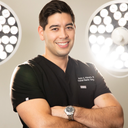Hi, I'm interested in having extended deep plane face lift and neck lift with partial removal of the submandibular glands. I've consulted several surgeons and there is a discrepancy between them in terms of whether I would also benefit from fat grafting (nano or micro) or not. I feel that I have voluminous face, and although I have deeper NLF and some Marionette lines, I'm hesitant whether the fat graft will be worth investing in. Would you recommend me having the fat graft along with surgery?
Answers (3)
From board-certified doctors and trusted medical professionals
Dr. Zoran Potparic, MD

Dr. Zoran Potparic, MD
Board Certified Plastic Surgeon
Answer
Dr. Lily Daniali, MD

Dr. Lily Daniali, MD
Board Certified Plastic Surgeon
Answer
Dr. Kyle Kimura, MD

Dr. Kyle Kimura, MD
Board Certified Facial Plastic Surgeon
Answer
More Facial Fat Transfer Questions
See all Facial Fat Transfer Q&AWE SEND PRETTY
EMAILS
What’s trending? Who’s turning heads? Which TikTok myths need busting? We’ve got you. No fluff, no gatekeeping—just real talk. Get our free, unfiltered newsletter.